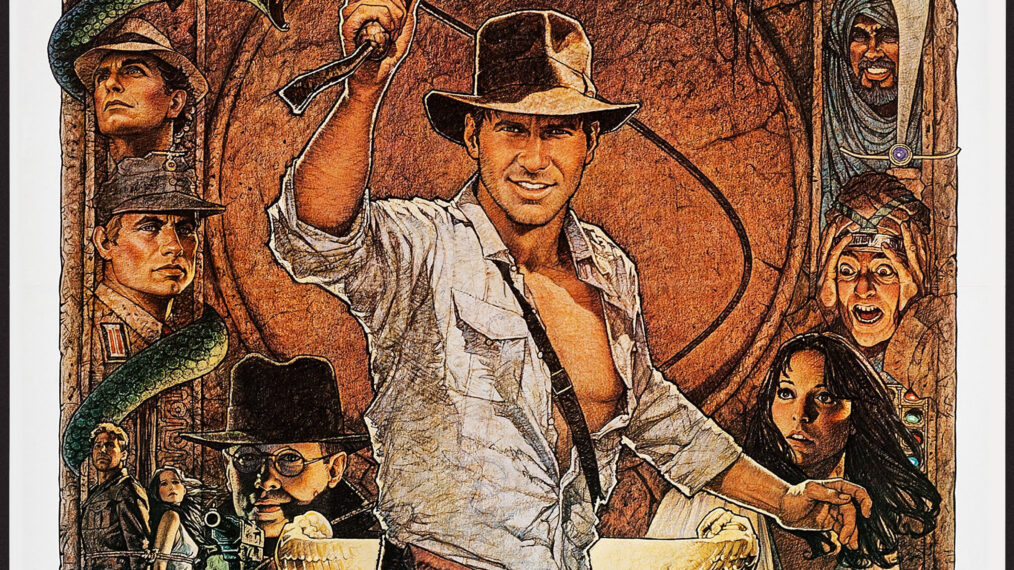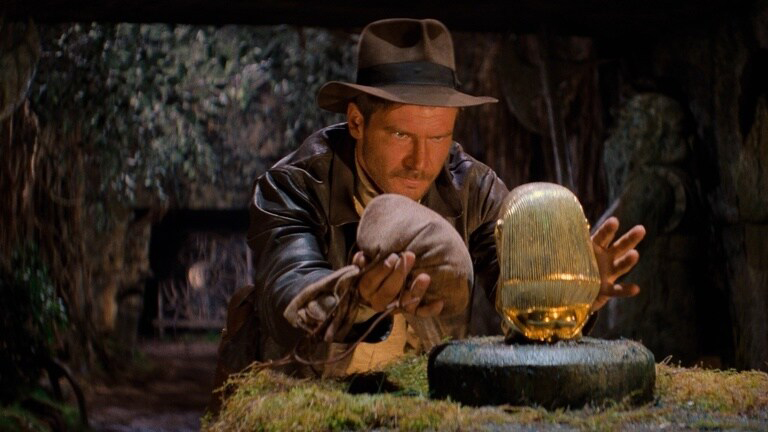Three Fun Examples of the Classic Cliffhanger Serials That Helped Inspire ‘Indiana Jones’
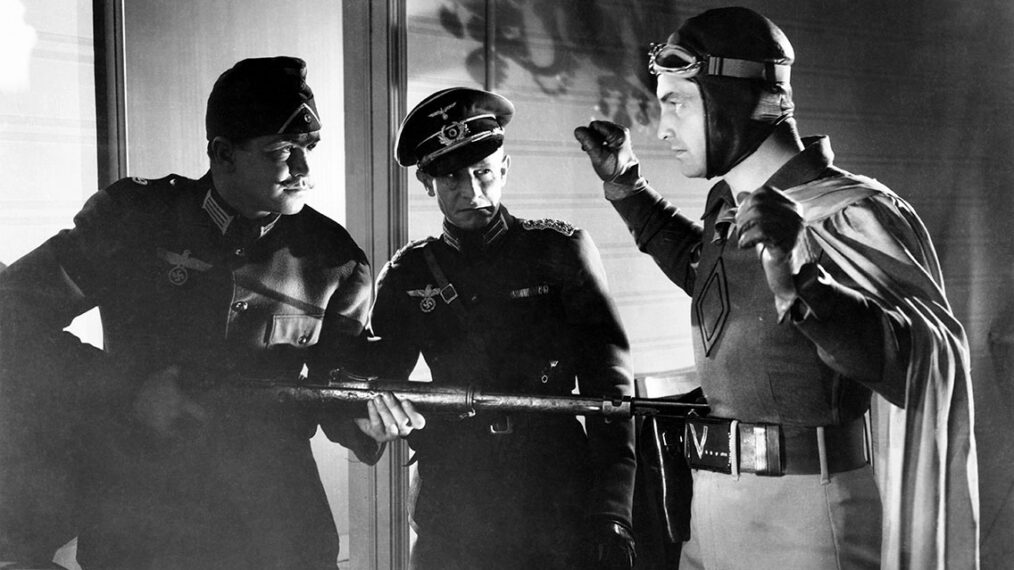
As the fifth and final Indiana Jones big-screen adventure, Indiana Jones and the Dial of Destiny, hits theaters in Summer 2023, we are now as far removed from the first Indy film, 1981’s Raiders of the Lost Ark, as Raiders was from many of the films that helped inspire it.
Just as he did for Star Wars, when it came to creating his beloved daredevil archaeologist character, George Lucas borrowed and repurposed from a variety of sources. Some of those sources were familiar classics — Raiders‘ famous truck chase, for instance, featured an updating of an equally legendary stunt performed by Yakima Canutt 42 years earlier in John Ford‘s Stagecoach.
But other sources were material of the pulp variety that might have been long forgotten by most by the early ’80s; elements, themes and character archetypes that had filled cheaper novels, comics and B-movie adventure flicks and TV shows from the 1930s through ’50s.
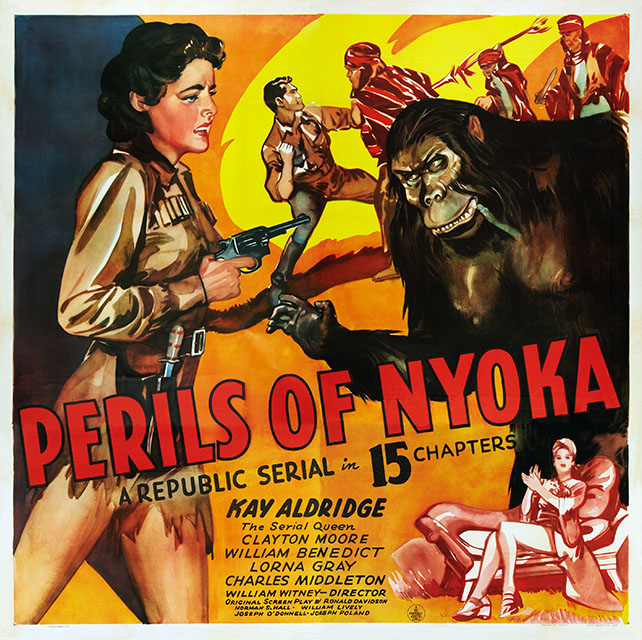
Courtesy Everett Collection
Far-off deserts and jungles were frequent settings for old-time adventure serials like 1942’s Perils of Nyoka
Among those movies from which the Indy films, particularly Raiders of the Lost Ark, have drawn were the Saturday afternoon serials that screened in theaters ahead of main features, along with cartoons, newsreels and the like.
These titles were most often in the adventure, crime or Western genres, and featured plenty of action scenes that usually left their protagonists in a seemingly inescapable predicament at the end of each installment. Audiences had to wait until the following week and the next episode to see how the hero got out of that “cliffhanger.”
The cliffhanger serial format had been around since nearly the beginning of motion pictures; the silent era had popular titles like The Perils of Pauline (1914) and The Hazards of Helen (1914-17).
It really took off into a golden age in the 1930s and early ’40s, when theater pre-shows were frequented by serials about cowboys, G-men, detectives, superheroes (Shazam and Captain America made their first live-action appearances in early ’40s serials not long after their debuts in the pages of comic books) — and, for some reason, a good number of stories about Canadian mounties — usually thwarting some outlaws or criminals.
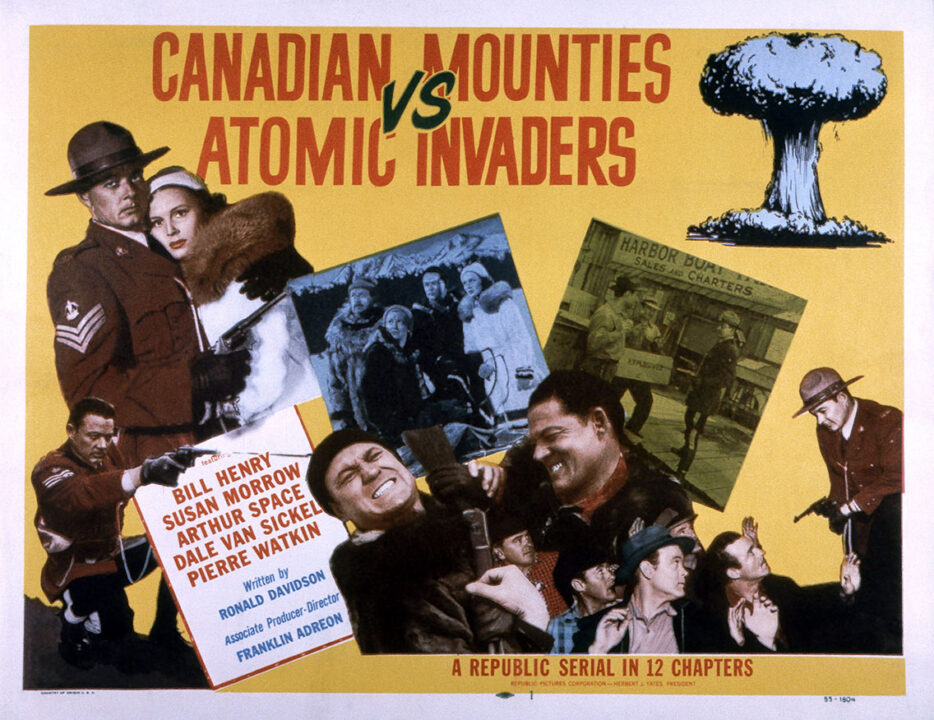
Courtesy Everett Collection
When World War II began, serials began to incorporate new heavies into their stories for the heroes to fight — villainous agents from Imperial Japan and Nazi Germany.
(As with so much else in popular culture of that time, these serials were usually racist in their depictions of other cultures, especially African natives or people from the Middle East. And the ones that used Japanese bad guys in their stories were particularly racist, often beginning by having a white actor in “yellowface” playing the villain in a stereotypical manner.)
After World War II, these sorts of classic cliffhangers may have waned, but they certainly stuck around into the ’50s, when stories turned toward more sci-fi elements, like that 1953 Canadian Mounties vs. Atomic Invaders one seen in the poster just above. Indiana Jones and the Kingdom of the Crystal Skull (2008) surely borrowed elements from some of these ’50s productions.
It’s the serials produced during the World War II era that seem to have had the most effect on inspiring Raiders of the Lost Ark, and are the ones where you can most see those influences, especially in terms of character types, settings, situations and especially the breakneck pacing of the story — these serials do not slow down as they throw the hero from one action-packed situation into another.
Usually running between 12 and 15 chapters, these classic cliffhanger serials would start out with a longer first chapter, often around 30 minutes, to set things up. Subsequent chapters would then run 15-20 minutes or so.
Starting with Chapter Two forward, the serial would have a brief writeup accompanying a picture of a character to catch audiences up with where things left off for that person — which was usually in a life-or-death situation from which it appeared impossible to escape.
(Similar to, but briefer than, the opening crawl seen in one of the Flash Gordon space opera serials of that era, which Lucas also famously adapted for Star Wars.)
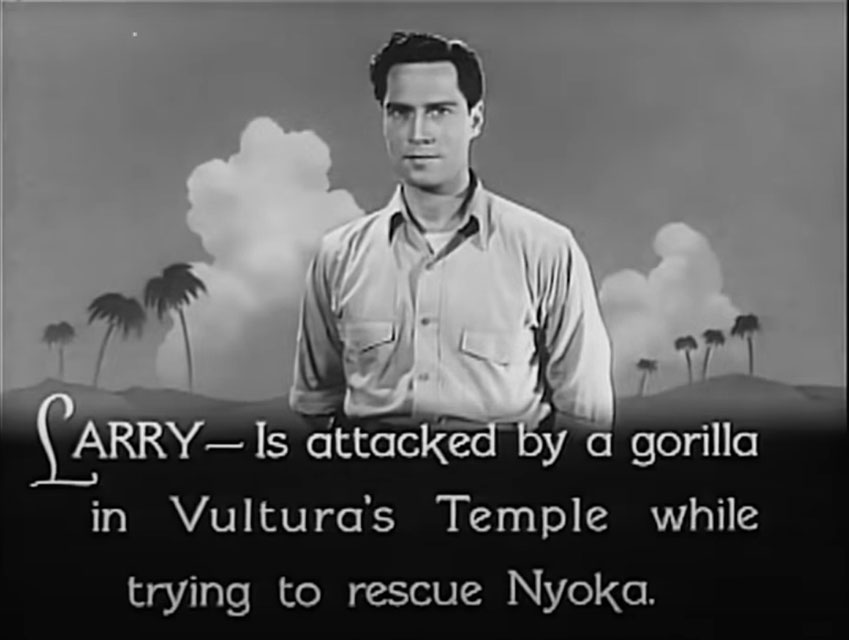
youtube.com/@serialsquadron
Sorry to hear it, Larry!
Once the story began, it would usually be punctuated by a series of smaller-scale action sequences (often a lot of fistfights) before it came to a climax with a big cliffhanger like this one:
Then, with the hero left hanging off a cliff (or pursued by roaring flames through a mine tunnel, or speeding in a truck toward broken bridge), would come the tease for the following week’s installment.
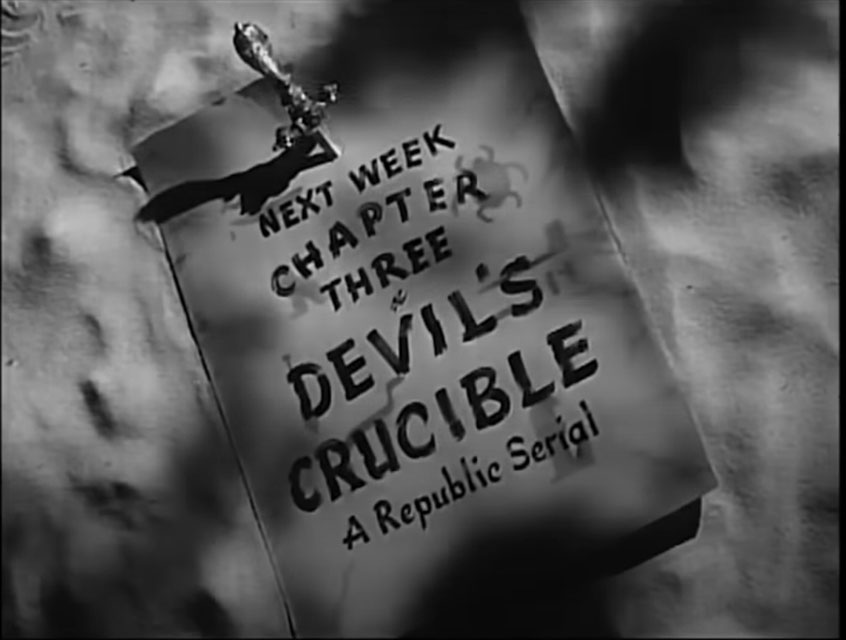
youtube.com/@serialsquadron
I’ve often wondered what it must have been like seeing these in the theater back then. Only being able to watch the cliffhanger once — not being able to see it again on tape or anything else even close to what we have now — then needing to wait a whole week to see how the hero gets out of the jam, trying to replay it in your head over that week and keep it in memory, but knowing that you would almost immediately not be able to recollect every minute detail of the scene.
And filmmakers knew that, of course, and used it when it came to resolving these cliffhangers, sometimes adding in elements not shown in the episode’s initial screening. So tweaking perception in most cases, and not exactly “cheating” with the resolution, although that sometimes did occur.
That sensation seems like it could have been as exciting as it was frustrating. I’m guessing it was mostly kids who watched these, and I can imagine them talking about the cliffhanger they saw with friends over the course of the week, working out theories on how the hero got away, hoping they’d be able to scrape enough coins together to go see how things were resolved at the theater next week.
That’s the sort of excitement that Lucas and director Steven Spielberg drew from these serials and brought to the Indiana Jones franchise, especially with Raiders of the Lost Ark.
Three titles from Republic Pictures — the undisputed champion of creating the best of these — are good starting points to check out some of what influenced Spielberg and Lucas when they made Raiders 40 years after these serials debuted, and what still makes those serials compelling viewing even now, about 80 years after their heyday.
The following serials and others like them can sometimes be found on streaming services like Prime or Tubi. Some are also on the Internet Archive and on YouTube; The Serial Squadron is an especially good resource on YouTube. Turner Classic Movies (TCM) shows serials on Saturday mornings, airing one episode of a particular serial each week for the entire run of the title, so you can sort of re-create that old-time Saturday matinee feeling.
Spy Smasher (1942)
Spy Smasher is the most enjoyable of the Republic serials I’ve seen since I discovered them over 30 years ago. I sought this one out in 1989 after seeing it name-dropped in an article I was reading about some of the inspirations for Raiders, and was able to buy it on videotape via a mail-order catalog.
Once I started watching it, I was kind of surprised at how into it I became. It certainly was not Raiders-level exciting, but it did have nicely staged action sequences, amid a lot of fistfights, which can go on a bit (Spy Smasher certainly does smash a lot of spies; if you thought there was no one who could punch out Nazis and their sympathizers more than Indiana Jones, then you have yet to see Spy Smasher in action).
There is also excellent stuntwork (Yakima Canutt was head of the stunt team), and chapters end on compelling cliffhangers that do make you want to see the next installment.
I ended up watching several chapters of Spy Smasher right away, and this was probably my first experience with binge-watching.
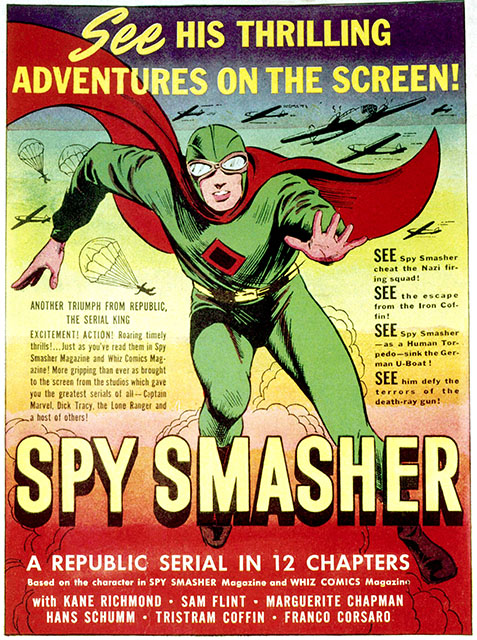
Courtesy Everett Collection
The serial is based on the Spy Smasher superhero who first appeared in publications by the long-defunct Fawcett Comics starting in 1939. (Rights to Fawcett characters were obtained by DC Comics in the early ’70s, so Spy Smasher is technically part of the DC-verse. Would be nice to see him on the big screen again; if they can do it with Blue Beetle, another character DC picked up from a defunct company, why not Spy Smasher?)
In this 12-episode serial, Kane Richmond plays both Alan Armstrong (who is secretly Spy Smasher) and Alan’s twin brother, Jack. (This twin plotline plays a role in a particularly memorable cliffhanger that ends one of the episodes.)
Spy Smasher‘s opening credits are pretty stirring in their own right, playing the famous opening strains of Beethoven’s Fifth Symphony and correlating them with a “V for Victory” theme.
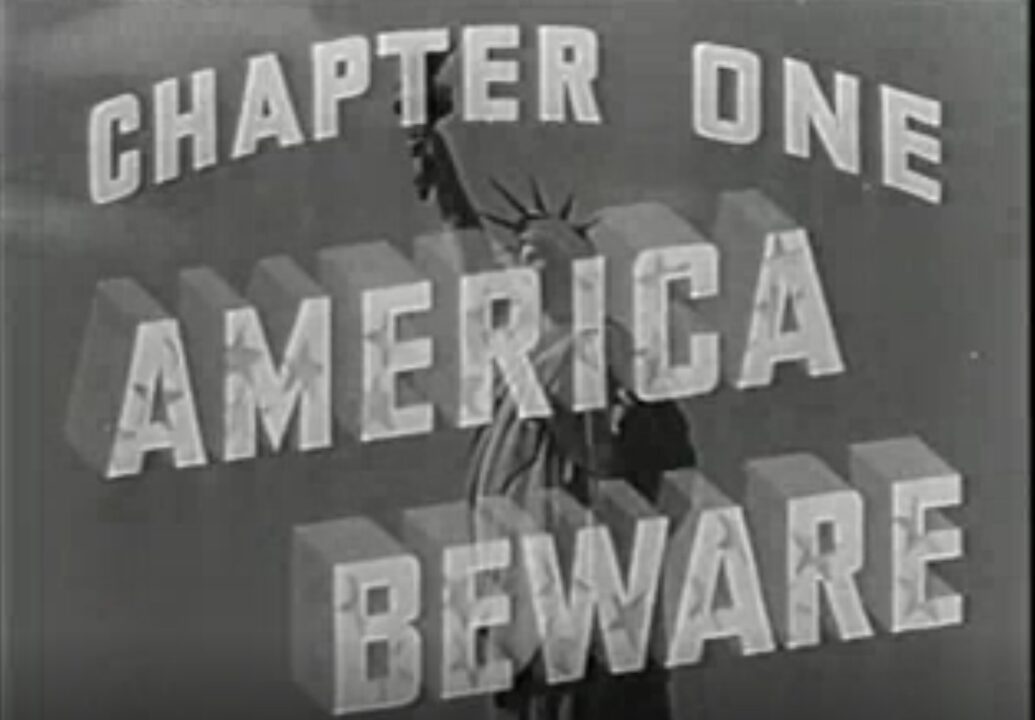
youtube.com/@serialsquadron
The serial itself starts out with plenty of action right out of the gate, as Spy Smasher sneaks into a house in occupied Paris looking for some info, only to be confronted and captured by Nazis, sent to a Gestapo dungeon and put before a firing squad (he refuses the blindfold, of course) — and that’s just in the first five minutes of the roughly half-hour first chapter, called “America Beware.”
Throughout the rest of that one and other installments with titles like “Human Target,” “Stratosphere Invaders,” “Descending Doom” and “Sea Raiders,” Spy Smasher is in the States trying to thwart a Nazi known as “The Mask” (Hans Schumm), who is directing agents to commit acts of sabotage in America and plotting to destroy the nation’s economy by flooding it with counterfeit money.
Again, the plot is a nice excuse to set up various action set pieces involving cars, trucks, boats, planes, a submarine, a mine cart and more, as well as some clever and enjoyable cliffhangers, like the one that ends Chapter One:
Perils of Nyoka (1942)
This desert-set, 15-chapter serial follows 1941’s Jungle Girl, which was the first to feature Nyoka the Jungle Girl, a character inspired by the works of pulp fiction master and Tarzan creator Edgar Rice Burroughs.
Here, “Serial Queen” Kay Aldridge plays Nyoka, who, with archaeologist Larry Grayson (Clayton Moore, who would go on to be the Lone Ranger in the classic 1949-57 TV series), is seeking the golden tablets of Hippocrates, which contain ancient medical knowledge and are buried along with other fantastic treasure.
“The golden tablets of Hippocrates” sounds like something Indiana Jones might go after, doesn’t it?
Also seeking these tablets, setting up the conflict and cliffhangers throughout the serial, is the sinister Queen Vultura (Lorna Gray) and her cohort, Cassib (Charles Middleton, unfortunately acting in brownface, as he had acted in yellowface when he played Ming the Merciless in the earlier Flash Gordon serials).
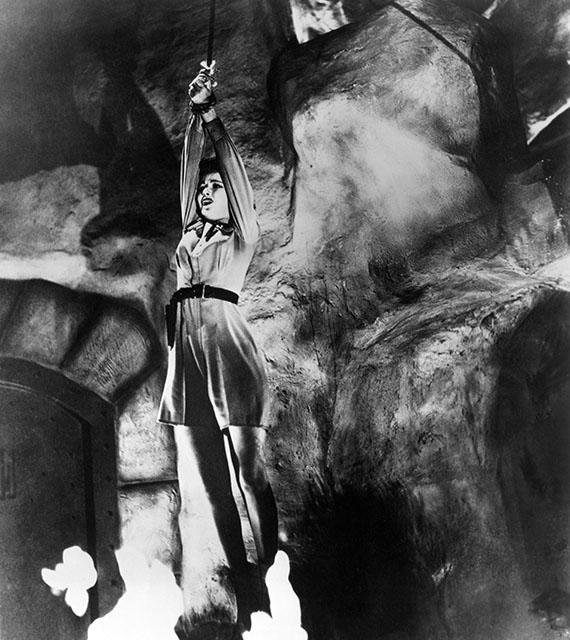
Courtesy Everett Collection
Nyoka (Kay Aldridge) facing yet another peril in Perils of Nyoka
Nyoka certainly does face plenty of perils throughout the serial, in chapters with titles like “Ascending Doom,” “Thundering Death,” “Underground Tornado” and “Satan’s Fury.”
Unfortunately, while she is brave and resourceful, she often does not escape the perils of her own accord, but must have Larry rescue her. Another sign of the times in which it was produced, but the serial is still enjoyable fun, and a number of its scenarios would not look out of place in an Indiana Jones movie.
The broken rope bridge sequence about midway through the clip below, for example, may remind you of a similar scene in the climax of Indiana Jones and the Temple of Doom.
Secret Service in Darkest Africa (1943)
This title, later known as Manhunt in the African Jungles, was another one I discovered about 30 years ago; I happened to see it for sale at a Suncoast video store at the mall, and it looked kind of cool. It is fun, as well as one example of how quickly the Republic Pictures serial machine could really crank these things out.
Released in summer 1943, Secret Service in Darkest Africa is a follow-up to G-Men vs. the Black Dragon, which had just been released about six months earlier. And the studio spared little expense; this was the third most expensive serial that Republic made, and it ran over budget during its 45-day shoot, on top of it.
Rod Cameron reprises his role as American secret agent Rex Bennett. In the earlier title, Bennett had thwarted Japanese enemy agents. Here, he is up against Nazi foes in North Africa who are scheming to take control of the entire Middle East.
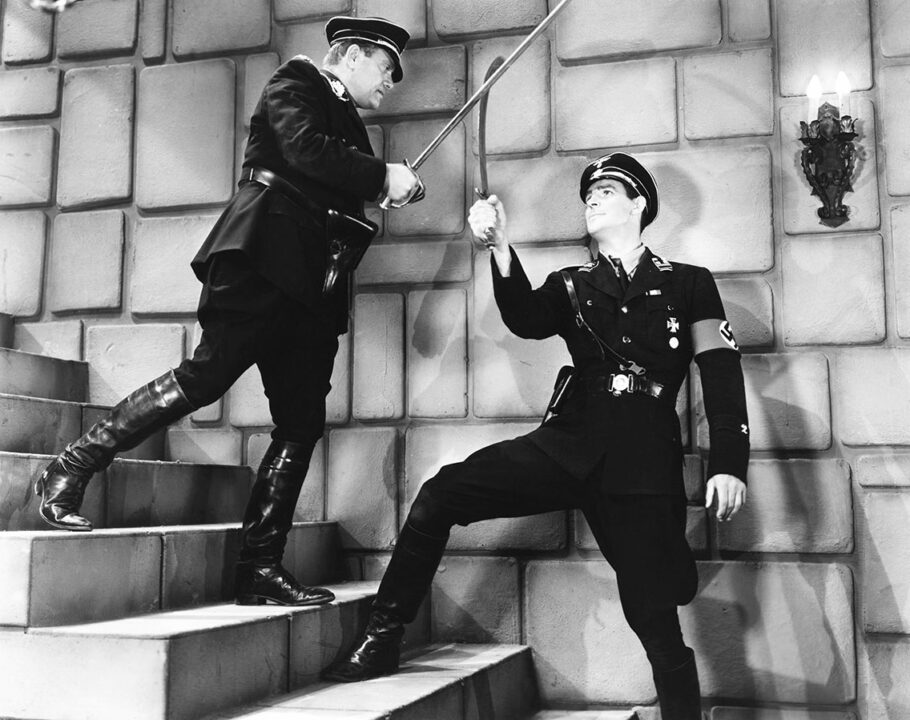
Courtesy Everett Collection
Undercover U.S. agent Rex Bennett (Rod Cameron, right) battles Nazi agent Wolfe (Frederic Brunn) in Secret Service in Darkest Africa
Just as in real life various nations were allied against Nazi Germany, here Bennett is joined in his fight by British reporter and expert airplane pilot Janet Blake (Joan Marsh) and French Moroccan police captain Pierre LaSalle (Duncan Renaldo, later the star of 1950-56 TV series The Cisco Kid).
Under that general plot premise, the serial sets up some fun adventure and cliffhangers (and, again, lots of fistfights) across 15 chapters that boast cool titles like “The Charred Witness,” “Invisible Menace,” “Murder Dungeon” and “Dial of Doom” (not to be confused with Indiana Jones’ Dial of Destiny or Temple of Doom).

